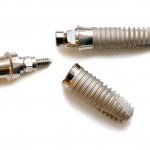
In 2002 the “McGill Consensus Statement on Overdentures” (Feine et al. 2002) concluded that two-implant overdentures (2-IOD) should become the first choice of treatment for the edentulous mandible. This paper we are reviewing here (Kodama et al. 2016) is an update of a paper published in 2009 (Emami et al. 2009) investigating this effect, based on patient satisfaction, oral and general health-related quality of life. The PICO formatted research questing being asked was: What is the impact of mandibular 2-IOD on patient based outcomes as compared to conventional dentures in completely edentulous individuals?
Methods
The authors conducted searches using similar protocols to the 2009 paper extending the date to September 2015. Electronic databases searched were Medline, EMBASE, the Cochrane Central Registry of Controlled Trials, and the Cochrane Systematic Reviews Database. Additional studies were identified from the reference lists generated (snowballing) and hand searches from relevant journals. There were no language restrictions. Two researchers independently screened the titles and abstracts in addition to data extraction. Possible risk of bias was assessed using the Cochrane tool. Inclusion criteria were, relevant randomised controlled trials rating general health and oral health-related quality of life (OHRQoL) of edentate patients wearing maxillary conventional dentures and mandibular 2-IOD’s or conventional dentures.
Results
- Patients general satisfaction was significantly improved by IOD, the effect size = 0.87 (95% CI: 0.55 to 1.19, P>0.00001 ) Heterogeneity however was I2=81%.
- The impact of mandibular prosthesis on OHRQoL also favored IOD. effect size = -0.66 (95% CI: -1.13 to -0.18, P>0.007%. Heterogeneity however was also I2=81%.
Conclusions
The authors concluded
The mandibular 2-IOD offers greater patient satisfaction and improved quality of life for the general edentate population than do conventional dentures. Health status, poor oral condition, and patient characteristics may limit these potential benefits and should be considered by clinicians when planning treatment. The findings of this review are relevant to oral health care providers, since good outcomes following therapeutic intervention are indicators of quality of care.
Comments and observations from practice
In general, this was a well-presented review considering the problems the authors identified with heterogeneity. The new search only identified 5 further papers for inclusion in the meta-analysis so it is interesting to note that in the 2009 search, 2262 citations were identified and, using the same protocol the 2016 paper identifies 6501(Howe 2016).
The effect sizes calculated were medium to large in favour of 2-IOD’s. There could have been more detail when appraising the quality of the articles included. Intention-to-treat and dropouts were dealt with but no mention was made of sponsorship by the implant industry. In the summary of manuscripts five papers were independent, one was unclear and eight were sponsored by the implant industry (Straumann (7), Nobel(1)) with its associated risk of bias in favour of 2-IOD (Lundh et al. 2012). This has a marked effect on the interpretation of the results because if sponsorship is considered it effects 43% of the patient rating of satisfaction results and 93% of the OHRQoL results.
Some further area for consideration were that the review period was too short to be reliable in a practice environment, a 5 years’ minimum would be more realistic. It would also be interesting to see how much well-adapted mandibular denture wearers benefitted from a 2-IOD compared to patients who have adapted poorly to well-constructed lower complete dentures. Looking at absolute improvements in OHRQoL’s as opposed to relative effect sizes could prove interesting. Contrast bias may explain some of the improvements in the 2-IOD cohort as they had to endure invasive surgery, additional clinical time and wound healing before stability was achieved, a longer review period may allow some regression to the mean.
Links
Primary paper
Kodama, N. et al., 2016. Efficacy of Mandibular 2-implant Overdenture: An Updated Meta-analysis on Patient-based Outcomes. JDR Clinical & Translational Research, 1(1), pp.20–30. Available at: http://jct.sagepub.com/content/1/1/20.full.
Other references
Emami, E. et al., 2009. Impact of implant support for mandibular dentures on satisfaction, oral and general health-related quality of life: A meta-analysis of randomized- controlled trials. Clinical Oral Implants Research, 20(6), pp.533–544.
Feine, J.S. et al., 2002. The McGill consensus statement on overdentures. Mandibular two-implant overdentures as first choice standard of care for edentulous patients. Montreal, Quebec, May 24-25, 2002. The International journal of oral & maxillofacial implants, 17(4), pp.601–2. Available at: http://www.ncbi.nlm.nih.gov/pubmed/12182304.
Howe, M.-S., 2016. How trendy are implants? Thoughts on Life and Dentistry. Available at: https://broadwaydentalcare.wordpress.com/2016/12/14/how-trendy-are-dental-implants/.
Lundh A, Sismondo S, Lexchin J, Busuioc OA, B.L., 2012. Industry sponsorship and research outcome: a Cochrane review. Cochrane database of systematic reviews, 12(7), pp.1–88. Available at: http://www.ncbi.nlm.nih.gov/pubmed/23440226.
Dental Elf -21st Jan 2015
Implant overdentures improve satisfaction, chewing and bite force, suggests review

[…] post Mandibular implant overdentures: Impact on patient based outcomes. appeared first on National Elf […]
[…] The appraisal is of a systematic review titled: Efficacy of Mandibular 2-implant Overdenture: An Updated Meta-analysis on Patient-based Outcomes […]
Nice review Mark-Steven, thanks
[…] Mandibular implant overdentures: Impact on patient based outcomes. […]